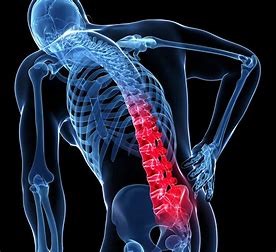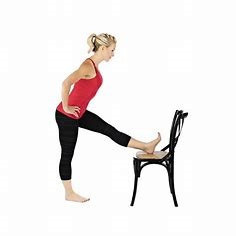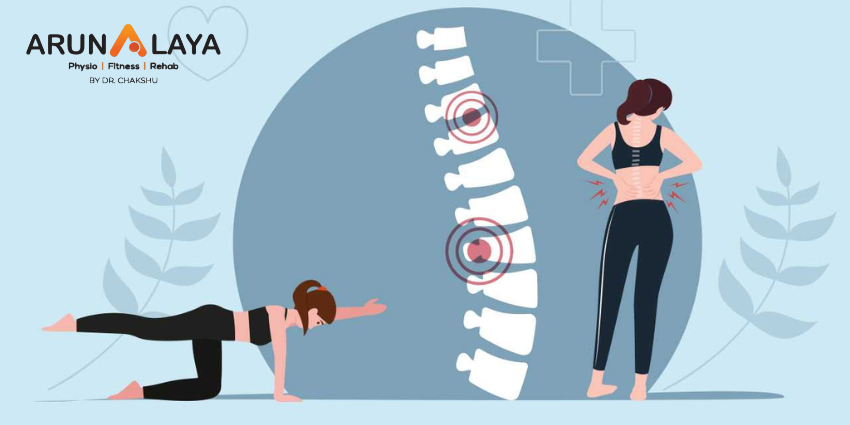Low Back Pain Relief
Most types of low back pain are often referred to physical therapy as one of the first-line treatments. Physical therapy for low back pain includes guided therapeutic exercises that strengthen the lower back muscles and condition the spinal tissues and joints.

The short- and long-term goals of physical therapy for back pain typically include the following:
- Decrease painful symptoms in the lower back and/or leg
- Improve low back function to tolerate daily activities as independently as possible
- Increase the spine’s flexibility and improve its range of motion
- Formulate a maintenance program to prevent the recurrence of back problems
The exercises are intended to provide flexibility and strength training to the entire kinetic chain—groups of body segments, joints, and muscles that work together to perform bodily movements.
Physical therapy helps restore the patient’s ability to perform daily activities with little-to-no discomfort. Large-scale studies have shown that physical therapy can provide up to 60% improvement in lower back pain and other symptoms.
Four Categories of Therapeutic Exercises for Back Pain
Therapeutic exercises are typically performed or learned under the guidance of a physical therapist and use a combination of the approaches described below.
-
Core-Strengthening Exercises
In simple terms, the body’s core can be described as the area surrounded by the stomach muscles in front, the spinal and buttock muscles at the back, the bottom of the lungs or the diaphragm on top, and the muscles of the pelvis and hip at the bottom. A weak core distributes weight unequally throughout the spine and into the legs, causing back pain or worsening existing back pain. Core-strengthening exercises help build strength and endurance in the core muscles, significantly reducing pain and improving functionality in the lower back.
Easy-to-perform core-strengthening exercises to relieve back pain include the pelvic tilt, cat-cow pose, bird dog, high and low planks, crunches, and exercises performed using a Swiss Ball.

-
Lumbar Stabilizing Exercises
A strong spine needs strong hips and legs to support the lower body, and to walk, bend, and twist effortlessly. Inefficiency of the muscles in the hips and legs has been proven to cause spinal instability and pain. Stretching exercises can activate and strengthen these muscles, such as the iliopsoas and hamstrings; improve coordination between the hip and spine; and aid in the transfer of forces across the lower back, pelvis, and legs.
Hip and leg exercises for beginners with lower back pain typically include hamstring stretches, squats, downward dog, planks with leg lifts, and lunges.
-
Aerobic exercises
Aerobic or cardiovascular exercise not only helps maintain a healthy heart but also heals the spinal muscles. Cardiovascular exercise involves synchronized movement in the body, which increases the heart rate, thereby improving circulation, oxygen content within the cells, and energy production in the tissues. Through these mechanisms, the painful spinal muscles respond by becoming less stiff and more mobile.
Simple aerobic exercises for back pain include brisk walking, a stationary bike, and an elliptical trainer. Low-impact aerobic conditioning can be achieved through aquatic exercise. The buoyancy of water supports the body’s weight, reducing stress on the spine and allowing for a greater range of motion.
-
Postural Training
Supported posture minimizes strain on the body by maintaining a balance of the muscles and bones. Unsupported posture can result from habit, painful symptoms, or ergonomics at work or home. Specifically in the spine, using incorrect posture can limit the movement of the tendons and muscles, making regular day-to-day movements difficult and painful. Posture correction exercises aim to stretch and strengthen the back and abdominal muscles and the kinetic chain, which help stabilize the spine.
Common posture correction exercises include calf stretching, seated squats, pelvic tilts, and abdominal strengthening exercises.
Physical therapy is a multi-component program that includes education, training, strength, flexibility, and endurance. A physical therapist plays a key role in designing a program suitable to the needs and limitations of the patient. A therapist’s goal is to teach the proper exercise technique, so the patient can perform the exercise on their own.
Duration of a Physical Therapy Program for Low Back Pain
The total length of an exercise program depends on the severity and duration of the low back symptoms.
- For chronic low back pain, physical therapy typically starts with an 8-week program performed under the guidance of a physical therapist.
- A longer-term maintenance or rehabilitation therapy is prescribed after the guided phase, which can be done at home.
The duration of the guided program may increase or decrease based on the outcome of the treatment.
Physical therapy may be combined with other nonsurgical treatments for the lower back to improve the overall pain outcome. Hands-on alternative treatments, such as massage therapy, manual therapy, and accupuncture may be beneficial when performed in combination with a physical therapy regimen.

